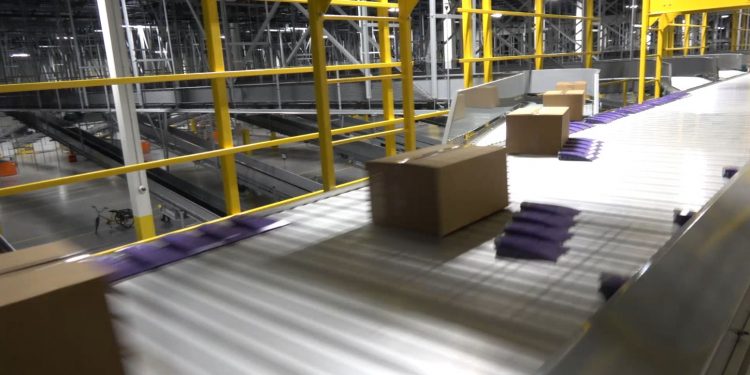The Digitization of Intralogistics: Sortation

How data capture can optimize your sortation operations
The supply chain is perpetually evolving, especially with technology that can accelerate and optimize sort center (SC) and distribution center (DC) operations. Within the warehouse, companies are enhancing their operations with a variety of tools and applying them to more areas within the four walls. Within a material handling process, they do this with more sophisticated equipment equipped with sensors and other methods of capturing data in digital form, then transmitting that information to warehouse controls software systems (WCS), warehouse execution systems (WES) and/or warehouse management systems (WMS).
When it comes to digitizing sortation operations, it begins with converting analog information into digital information that computers can manage quickly and efficiently. Physical package information like weight and dimensions is converted into digital form, along with an analog (sometimes handwritten) delivery address or next processing step information. When packages reach the sortation system, additional digitization takes place in the form of data identifying package speed, acceleration, and specific location within the system. This data is collected via sensors and other devices within the sortation system and provided to computers that control sortation equipment operation.
For example, a package arriving from an international destination is received and placed into automated storage inventory within a Customs clearance operation, pending certification of import duties paid. Upon clearance, an employee informs the WCS/WES/WMS that the package is ready for further processing. Computers communicate to the automated storage system to retrieve it and transport it via automated conveyors to a sortation system for proper routing within the facility. From there, packages are removed and loaded into outbound transportation for delivery to another sortation facility or to a final destination. Sensors capture digital information along this entire journey, such that WCS/WES/WMS and sortation computers can automatically process and document each step.
The more often data and information are digitized, the faster the end-to-end processing will become. Using digitized information regarding an item’s physical characteristics and the next operational process, warehouses can digitalize the entire sortation process, responding to changes faster and with less waste. Sortation is just a single piece of an extensive operational enterprise that includes storage, retrieval, dispatch, transportation, and distribution.
To reach operational peak performance, i.e., a state of digital transformation, the more digitized data and digitalized processes, the better. Data captured from a package must feed up to a WMS. The WES or WMS, in turn, must first identify the next operational process an item is to “sort” the packages and instruct the sortation equipment where to send them. Cameras and sensors identify the label, read it, and track it as it arrives for sortation. The sortation equipment can quickly and efficiently process the package and send it on its way.
A critical piece of an automated package sorting operation using digitized data is the linear package singulator, which efficiently and automatically “pre-processes” items before a sortation operation. Here, the digitized data of bulk parcels—size, weight, shape, orientation, and the like—is determined and sent to a control computer. The computer, in turn, signals motors, belts, and actuators to move in a synchronized fashion to align items in a single file, separated by a fixed distance and moving at a fixed speed in preparation for high-speed sortation. As parcels move through the processing chain, even more sophisticated material handling operations occur because of the use of digitized data, for example palletizing robots.
Before implementing large or more complex systems, sometimes it’s important first to build a replica —a digital twin—to simulate and test differing operational scenarios. This provides advanced negative or positive feedback so mistakes can be corrected, and operations fine-tuned before fully committing to manufacture and installation of a highly automated operation.
The advantages of accuracy, speed, safety, and reducing repetitive tasks for employees are all thanks to the digitization and digitalization processes, which include sophisticated sortation tools.
For more information about the Solutions Community: https://www.mhi.org/solutions-community
For further articles from the Solutions Community:
Creating A Flexible Order Fulfillment Operation
Where Do Conveyors Go From Here?
Benefits Of Condition Monitoring Sensors In The Material Handling World
The Digitization Of Intralogistics: Storage
Supply Chain Lessons Learned During The Pandemic
3 Ways Digital Tools Improve Warehouse Labor Productivity
Logistics And The Importance Of Digital Inventory



